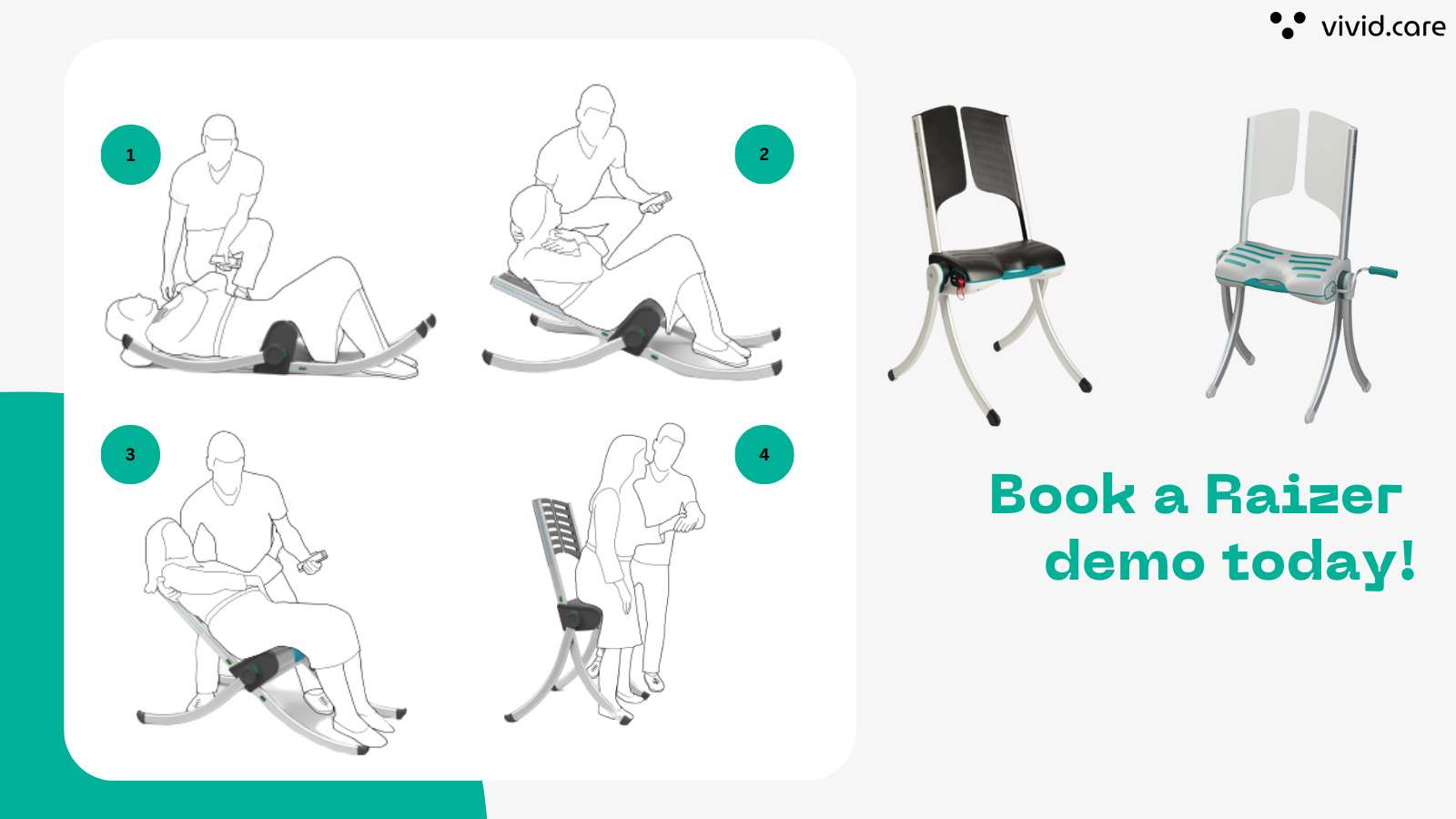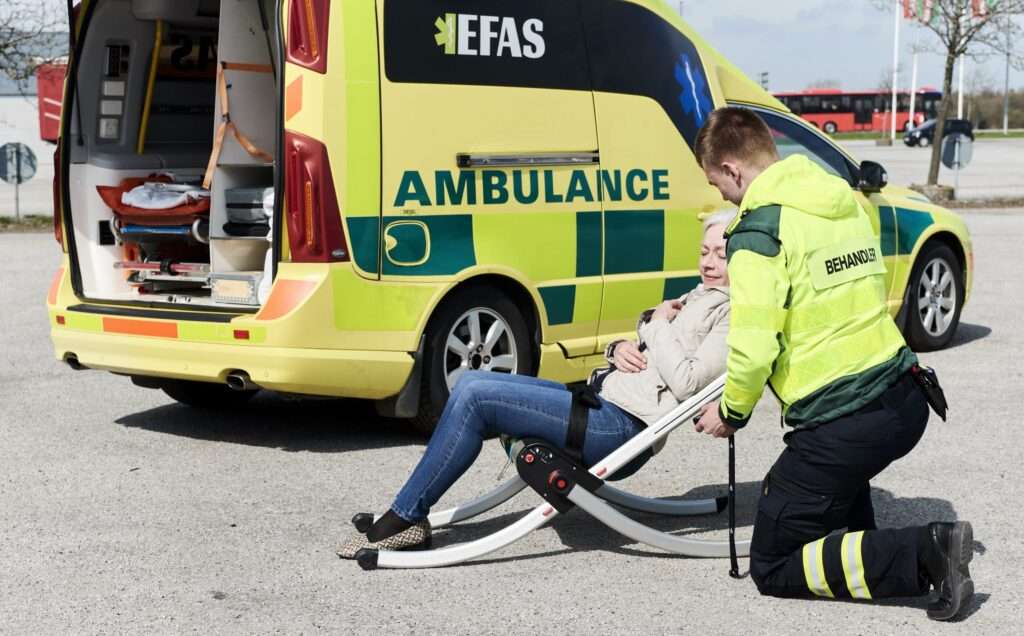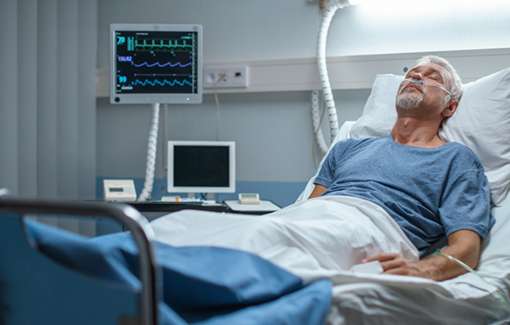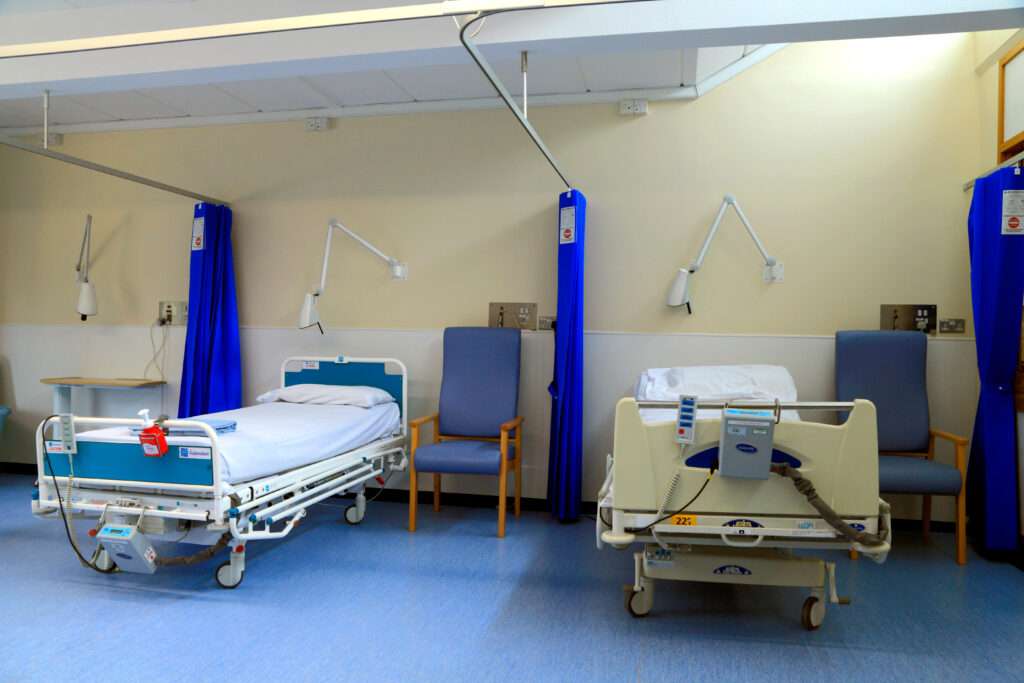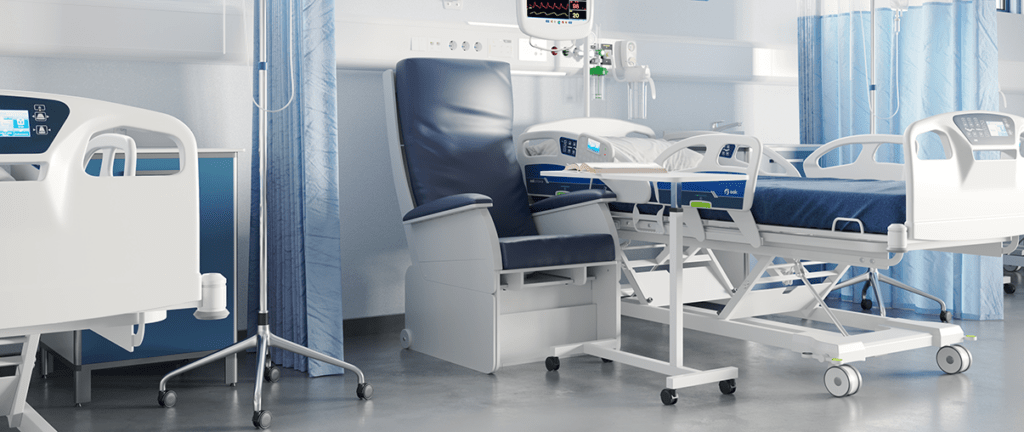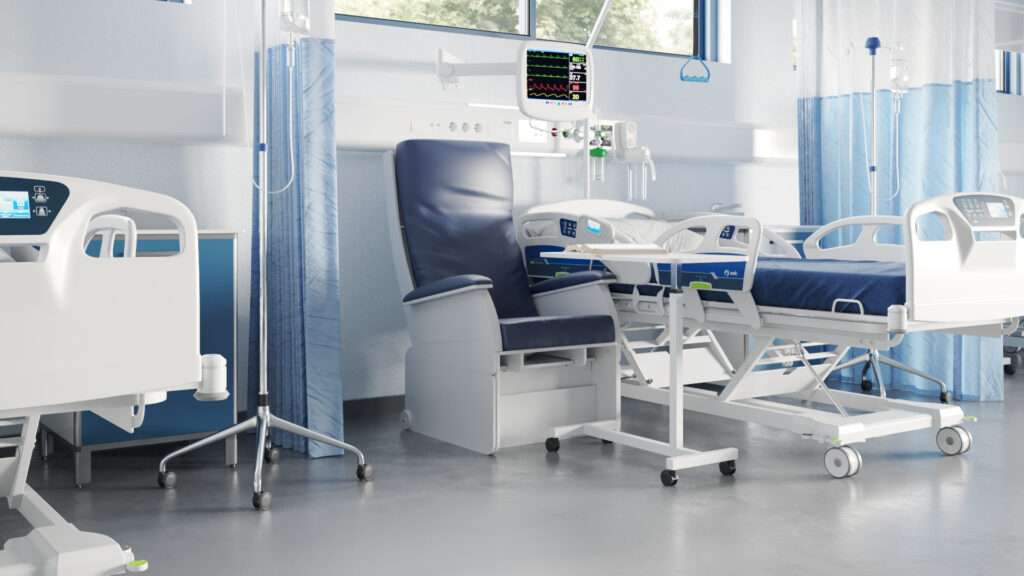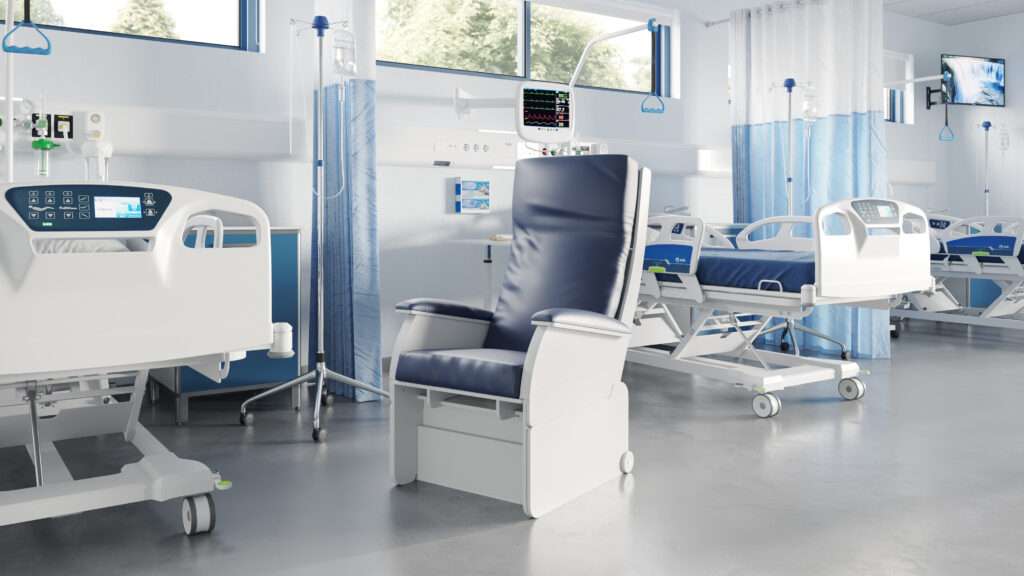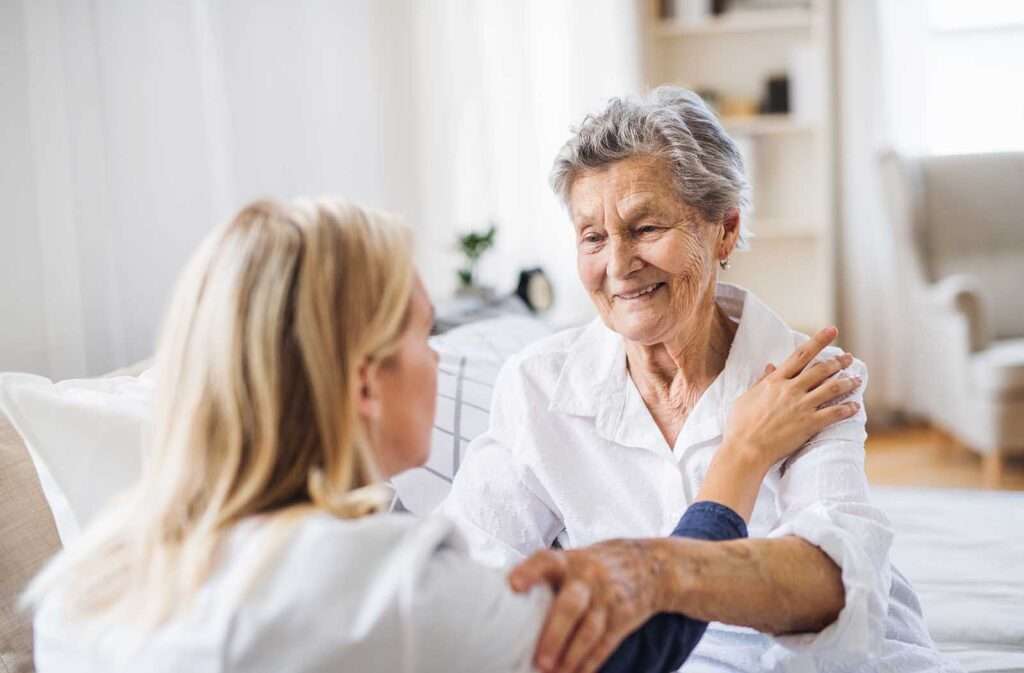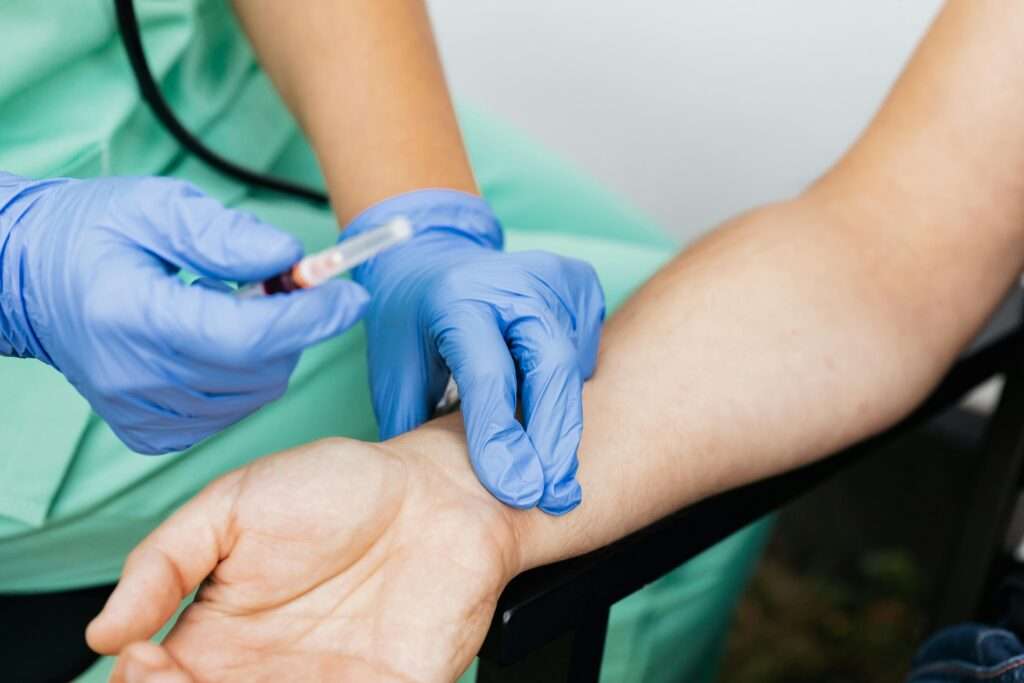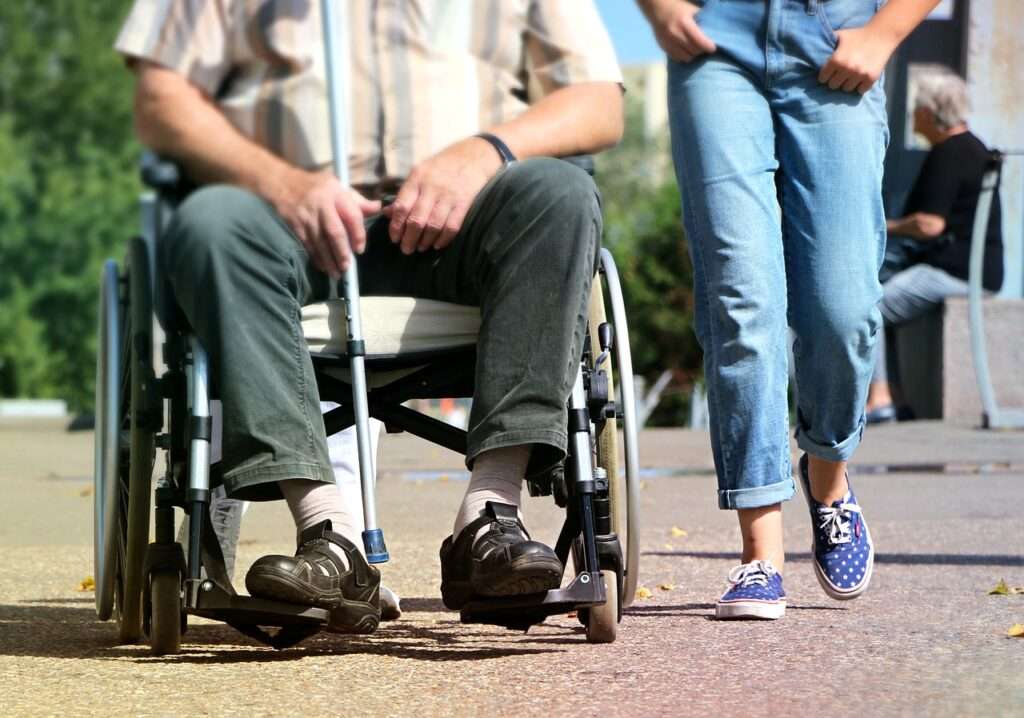UK ambulance services are often tasked with providing a timely and safe falls response to people in care homes or in their private homes. Providing this service, however, has become more difficult for ambulance services in recent years.
Between February 2021 and August 2021, almost 60 per cent more 999 calls were answered by ambulance services nationally compared to the same period in the year before.
This increase in demand for community ambulance services coupled with inefficiencies in hospital discharge rates has resulted in longer waits for ambulances to handover patients to emergency departments. Long waits of over 60 minutes to hand over patients at hospitals increased 285%between February and August 2021.
Handover delays have negative effects on patients in the back of an ambulance waiting to receive care in emergency departments, but they also lead to major risks for patients in the community waiting for an ambulance response to their 999 call. As a result of the compounding issues, ambulance response times have slowed in recent years.
Jump straight to...
- The Scale of the Falls Problem
- Easing Ambulance Pressures
- Non-Injurious Falls
- How Do Ambulance Services Pick Up a Non-Inured Fallen Person?
- Summary
How The Raizer Lifting Chair Supports UK Ambulances
The Scale of the Falls Problem
The fear of falling is very prevalent in the elderly community and amongst people with reduced mobility. Falls related calls to 999 account for 8-10% of all ambulance callouts, according to the AACE and around 1 in 3 adults over 65 and half of people over 80 will have at least one fall a year.
This issue will continue to increase in prevalence as the ageing population grows and continues to require emergency services. The average (median) age in England and Wales rose from 39 years in 2011 to 40 years in 2021.
Older adults are more likely to likely to suffer from dementia, reduced eyesight, a general decrease in mobility, along with other factors that can increase the risk of falls, both injurious and non-injurious.
Easing Ambulance Pressures
There have been various attempts to reduce the pressure faced by UK ambulance services, one of these has been the creation of community-based falls response teams. These teams are intended to provide rapid falls recovery service that reduces long lie times amongst the elderly and alleviates pressures faced by ambulances.
Recently, Amanda Pritchard Chief Executive of NHS England, called for an uptick in the creation community based falls teams across the UK because of their potential to alleviate existing pressures on ambulances and allowing them to respond to higher category and more specialist emergency calls.
UK Ambulance Categories and Target Response Times:
Non-Injurious Falls
Non-injurious falls are incidents where people fall but do not suffer any serious injury. These incidents are quite common, particularly in the elderly community for the reasons mentioned above. However, a fall that doesn’t result in an injury can still be distressing for the individual involved, and these events often require medical attention.
Unfortunately, this increasing demand for ambulance services to respond to non-injurious falls is putting significant pressure on the ambulance services in the UK. Ambulance crews are frequently dispatched to these incidents, which can divert resources away from more serious emergencies and causes the aforementioned handover delays.
Falls among the elderly in the community, whether in care homes or private residences fall into category 3 and receive a commensurate response. This can result in delays in response times for life-threatening emergencies, which can have serious consequences for patients.
How Do Ambulance Services Pick Up a Non-Inured Fallen Person?
UK ambulance services have a range of lifting equipment available to them, which can be used to lift and transfer the fallen patient depending on their needs, this may include:
Hydraulic Stretchers:
Ambulance stretchers are used to transport patients from the scene of an accident or emergency to the ambulance and then to the hospital. also known as ambulance cots or gurneys, which are designed to lift and transport patients from the ground to the ambulance and vice versa.
These stretchers are equipped with safety straps and can be adjusted to various heights and angles to ensure patient comfort and safety during transportation. They can be adjusted to different heights and angles, and some stretchers are designed to support patients with suspected spinal injuries.
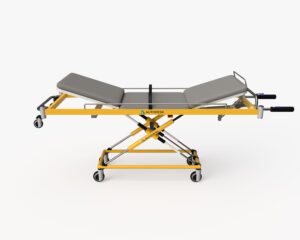
Hydraulic stretchers may be used by UK emergency services to provide a flat lift and transportation to a fallen person.
Slide Sheets:
Used to aid in the transfer of patients, slide sheets are smooth, slippery sheets that help to move a patient easily and safely from one surface to another, such as from a bed to a stretcher or from the floor to a chair. Slide sheets are an essential tool in the safe and efficient movement and handling of fallen patients.
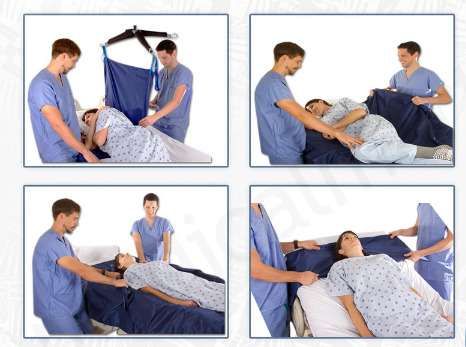
Slide sheets can be used to aid the moving and handling of patients while reducing risk of injury to carer and patient.They are specifically designed to reduce friction between the patient and the surface they are being moved on, minimizing the risk of musculoskeletal injury to both the patient and the healthcare worker and improve patient comfort during transfers.
The low friction also makes it easier for healthcare workers to move the patient without straining themselves or causing unnecessary discomfort to the patient and slide sheets are easy to clean and can be used repeatedly, making them a cost-effective solution for healthcare facilities.
Spinal Boards:
Spinal boards, also known as backboards,
are commonly used in situations where a patient may have a suspected or confirmed spinal injury. They are designed to immobilize the patient’s spine and prevent any movement that could cause further damage. In cases where a patient has fallen and is unable to move, a spinal board may be used to transport them to a hospital for further treatment.
Spinal boards are particularly useful in cases where the extent of the patient’s injuries is unknown, as they provide a level of stability and protection to the spine. These long, flat boards are made of rigid material and are placed under the patient to keep the spine stable during transport. They should only be used by trained healthcare professionals, as incorrect use can cause further harm to the patient.
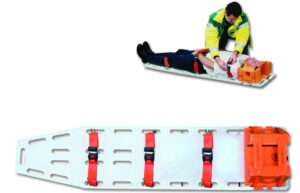
Spinal boards are a useful tool in providing flat lift assistance to a person who has fallen and injured themselves.To use a spinal board, the patient is first placed onto the board while lying flat on their back. The board is then secured to the patient using straps and head immobilization devices to prevent any movement of the neck or head. Once the patient is secured, the board can be lifted and moved to a stretcher or other transport device.
It is important to note that spinal boards have limitations. Prolonged use on a spinal board can cause discomfort and pressure sores, and they may not be suitable for all patients, they also do not provide a solution for other potential injuries the patient may have sustained.
Vacuum Mattresses:
Vacuum mattresses have been used in the healthcare industry for a long time, but their benefits for emergency medical services have recently gained attention. These mattresses have been found to be particularly helpful in responding to falls among the elderly in the community. In the UK, ambulance services can significantly benefit from the use of vacuum mattresses in their response to fall incidents.
Vacuum mattresses provide a stable and supportive surface for patients during transportation. When responding to falls among the elderly, it is crucial to ensure that the patient is immobilized to prevent further injury during transportation. Vacuum mattresses provide an effective means of immobilization, ensuring that the patient’s body is held in a stable and secure position during transportation. This reduces the risk of further injury and provides a higher level of patient comfort during transportation.
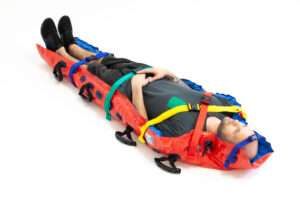
Another benefit offered by a vacuum mattresses is their ability to distribute pressure evenly. Elderly patients who have fallen may have existing medical conditions that require careful handling during transportation. Vacuum mattresses are designed to distribute pressure evenly across the patient’s body, reducing the risk of pressure sores and ensuring the patient’s comfort.
Vacuum mattresses are also quick and easy to set up, making them ideal for emergency medical services. When responding to a fall incident, ambulance crews need to be able to provide effective care as quickly as possible. Easily inflated and deflated, they allow ambulance crews to provide swift and effective care to elderly patients who have fallen.
Vacuum mattresses can be a valuable addition to the equipment used by ambulance services in the UK. They provide a stable and supportive surface for patients during transportation, distribute pressure evenly, and are quick and easy to set up. Using vacuum mattresses as part of the arsenal of equipment used in their response to falls among the elderly in the community, ambulance services can improve patient outcomes, reduce the risk of further injury, and provide a higher level of care to their patients.
Medical Hoists:
Hoists, also known as medical lifts are mechanical devices used to lift and move patients who are unable to move themselves. They can be used to lift patients onto stretchers or transfer them from a bed to a chair. Medical lifts are essential equipment used by ambulance services in the UK to lift elderly fall patients safely and efficiently.
When responding to fall incidents among the elderly, ambulance services often use medical lifts to safely and efficiently lift patients off the ground. This reduces the risk of further injury and ensures that the patient is handled with care and dignity. Medical lifts are particularly helpful in situations where the patient is unable to stand or has difficulty moving due to pain or other medical conditions.
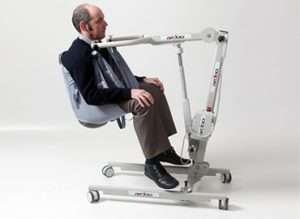
A medical hoist can be used to lift a patient and transfer them elsewhere if required. This type of lift is used when responding to non-injurious falls.
Inflatable Lifting Cushions:
Inflatable lifting cushions are a relatively new technology that is increasingly being used by ambulance services in the UK. These cushions provide a safe and efficient way of lifting patients who have fallen or are immobile due to medical conditions. They are particularly useful in situations where space is limited, and traditional lifting equipment is impractical.
Inflatable lifting cushions work by inflating to create a stable and supportive surface that can be used to lift patients. They come in different sizes and weight capacities, making them suitable for a wide range of patients. They are also designed to be lightweight and easy to transport, making them ideal for use by ambulance services.
One of the main benefits of inflatable lifting cushions is their versatility. They can be used in a wide range of situations, from lifting patients off the floor to transferring them from one surface to another. They are particularly useful in confined spaces, such as narrow hallways or small rooms, where traditional lifting equipment would be difficult to use.
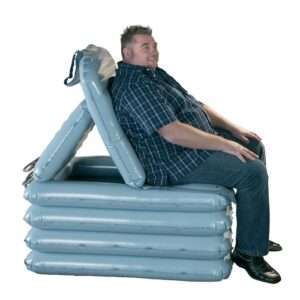
Another benefit of inflatable lifting cushions is their ease of use. They can be quickly inflated and deflated, making them ideal for emergency situations where time is of the essence. They also require minimal training to use, making them accessible to all ambulance crew members.
These inflatable lifting aids are designed to be gentle on patients and distribute pressure evenly to reduce the risk of pressure sores and other injuries. They also provide a higher level of patient comfort during lifting, which is particularly important for elderly patients or those with pre-existing medical conditions.
Raizer Lifting Chairs:
The Raizer lifting chair is an innovative technology that is increasingly being used by ambulance services in the UK to respond to non-injurious falls among the elderly in the community. Unlike traditional lifting equipment, which can be bulky and time-consuming to use, the Raizer lifting chair provides a quick and easy way of lifting patients off the ground, reducing the risk of further injury and ensuring patient comfort.
The Raizer lifting chair is designed to be portable and easy to assemble. It consists of a lightweight frame and a series of straps that are used to lift the patient off the ground. The frame can be assembled in under a minute, and the lifting process takes less than a minute, making it an ideal tool for emergency responders.
The Raizer lifting chair is particularly useful in responding to non-injurious falls among the elderly in the community. In many cases, elderly patients who fall are not injured but are unable to get up on their own. The Raizer lifting chair provides a quick and easy way of lifting these patients off the ground, reducing the risk of further injury and ensuring patient comfort.
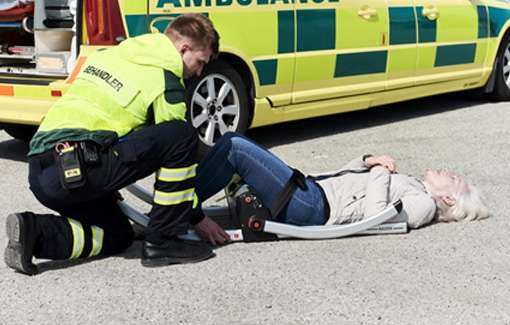
In addition to its practical benefits, the Raizer lifting chair is also designed to be gentle on patients. It distributes pressure evenly, reducing the risk of pressure sores and other injuries. It also provides a higher level of patient comfort during lifting, which is particularly important for elderly patients or those with pre-existing medical conditions.
The Raizer lifting chair is also useful in promoting independent living among the elderly in the community. By providing a quick and easy way of getting up from a fall, elderly patients can continue to live independently in their own homes, reducing the burden on healthcare services and improving their quality of life.
The Raizer lifting chair is a valuable tool that is increasingly being used by ambulance services in the UK to respond to non-injurious falls among the elderly in the community. It provides a quick and easy way of lifting patients off the ground, reducing the risk of further injury and ensuring patient comfort. By using the Raizer lifting chair, ambulance services can improve patient outcomes, promote independent living among the elderly, and provide a higher level of care to their patients.
Summary:
UK emergency services rely on a wide range of lifting equipment to respond to medical emergencies and ensure the safety and comfort of their patients. From traditional stretchers and lifting slings to more innovative technologies like vacuum mattresses, inflatable lifting cushions, and the Raizer lifting chair, there are many tools available to emergency responders to provide the best possible care to their patients.
Each piece of lifting equipment has its own benefits and drawbacks, and emergency responders must carefully assess each situation to determine which equipment is most appropriate. Whether it’s responding to a non-injurious fall among the elderly in the community or transporting a critically ill patient to the hospital, emergency responders must be equipped with the tools and knowledge to provide the highest level of care to their patients.
As technology continues to advance, it’s likely that new and innovative lifting equipment will be developed, providing even better outcomes for patients and emergency responders alike. However, regardless of the equipment used, the most important factor in providing high-quality care is the skill and expertise of the emergency responders themselves. Through ongoing training and education, emergency responders can continue to improve their ability to respond to medical emergencies and provide the best possible care to their patients.
How The Raizer Lifting Chair Supports UK Ambulances
Over the years, we have worked with emergency services across the UK and supported their efforts in rapidly responding to falls in care homes and the community using the Raizer lifting chair.
Contact our team for more information on how Vivid Care and the Raizer lifting chair can help your team.
